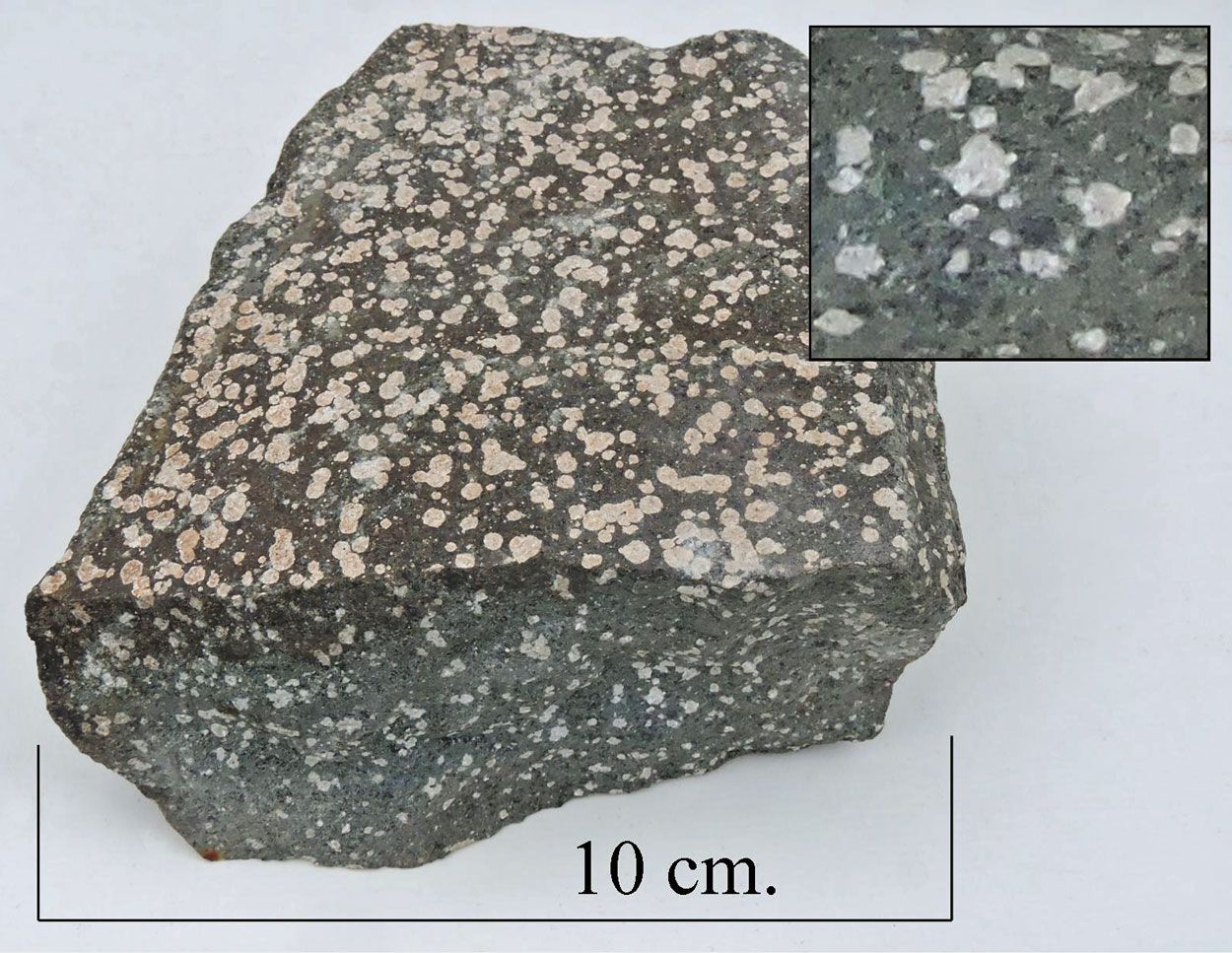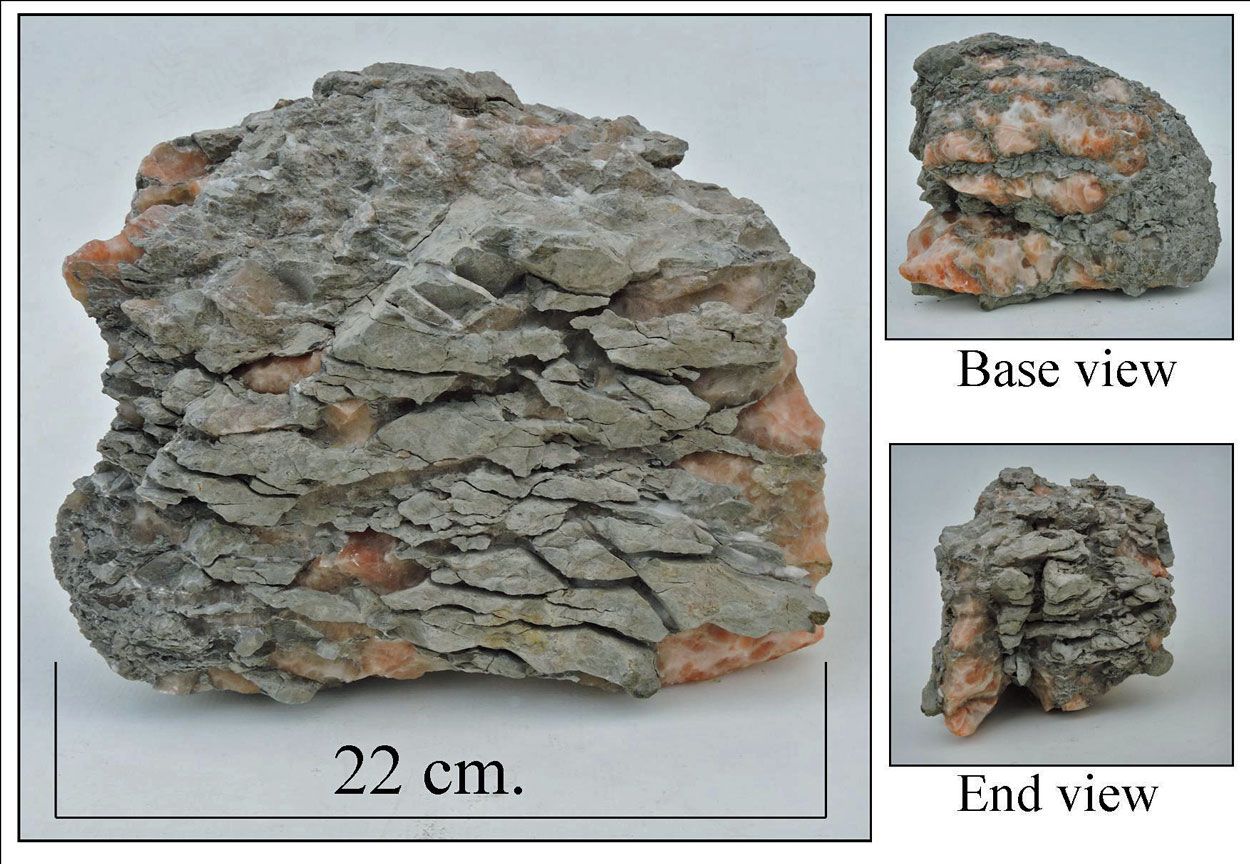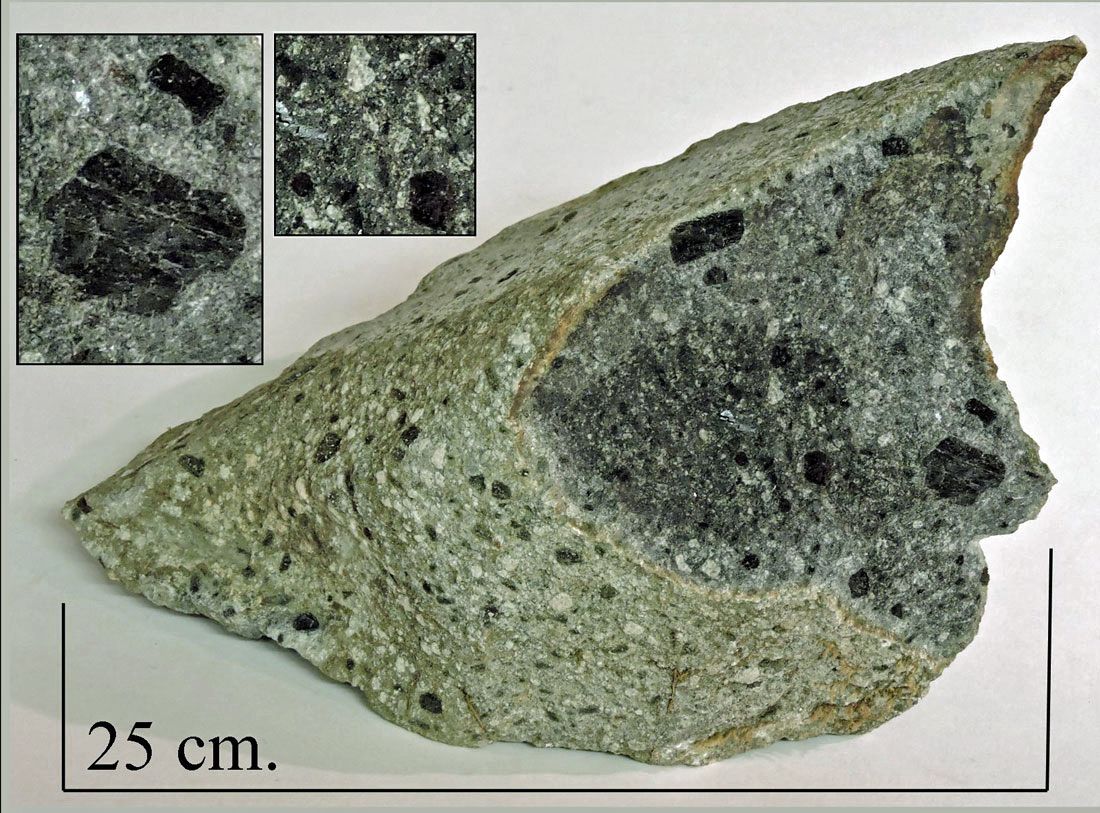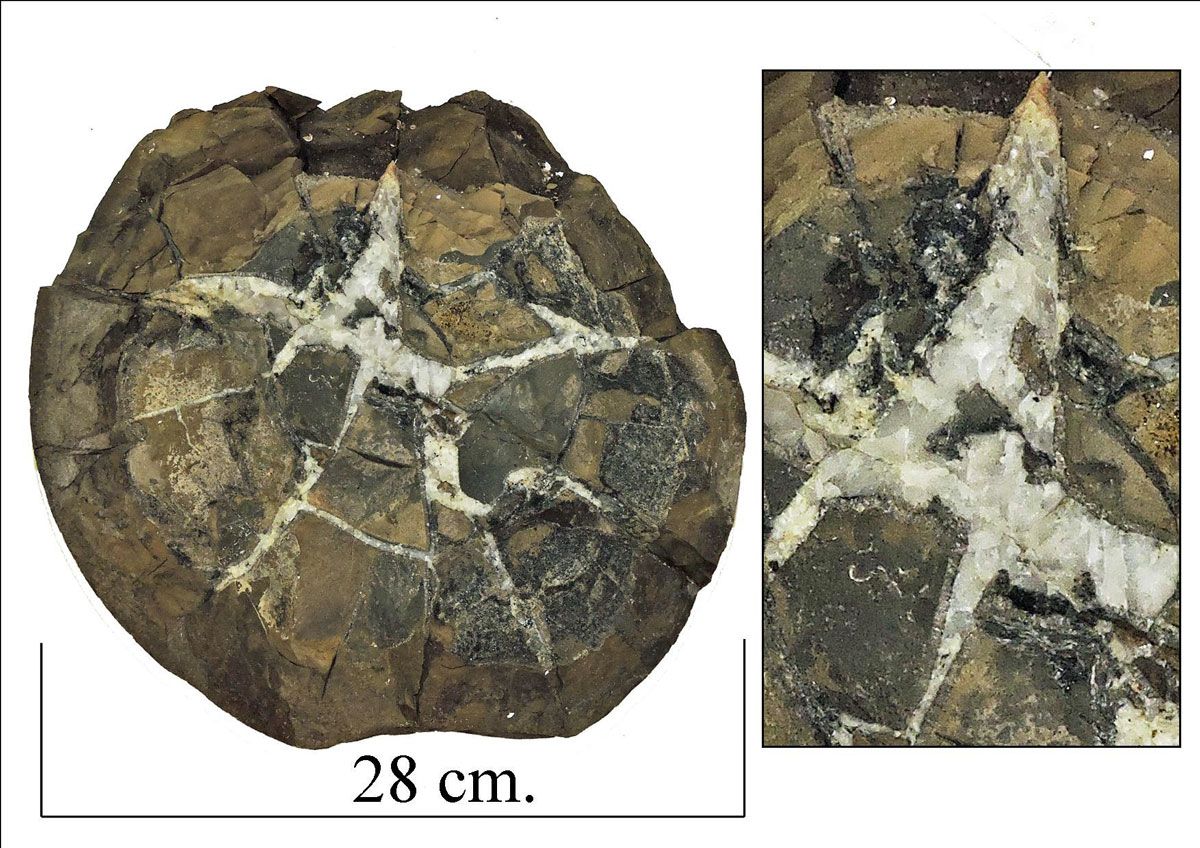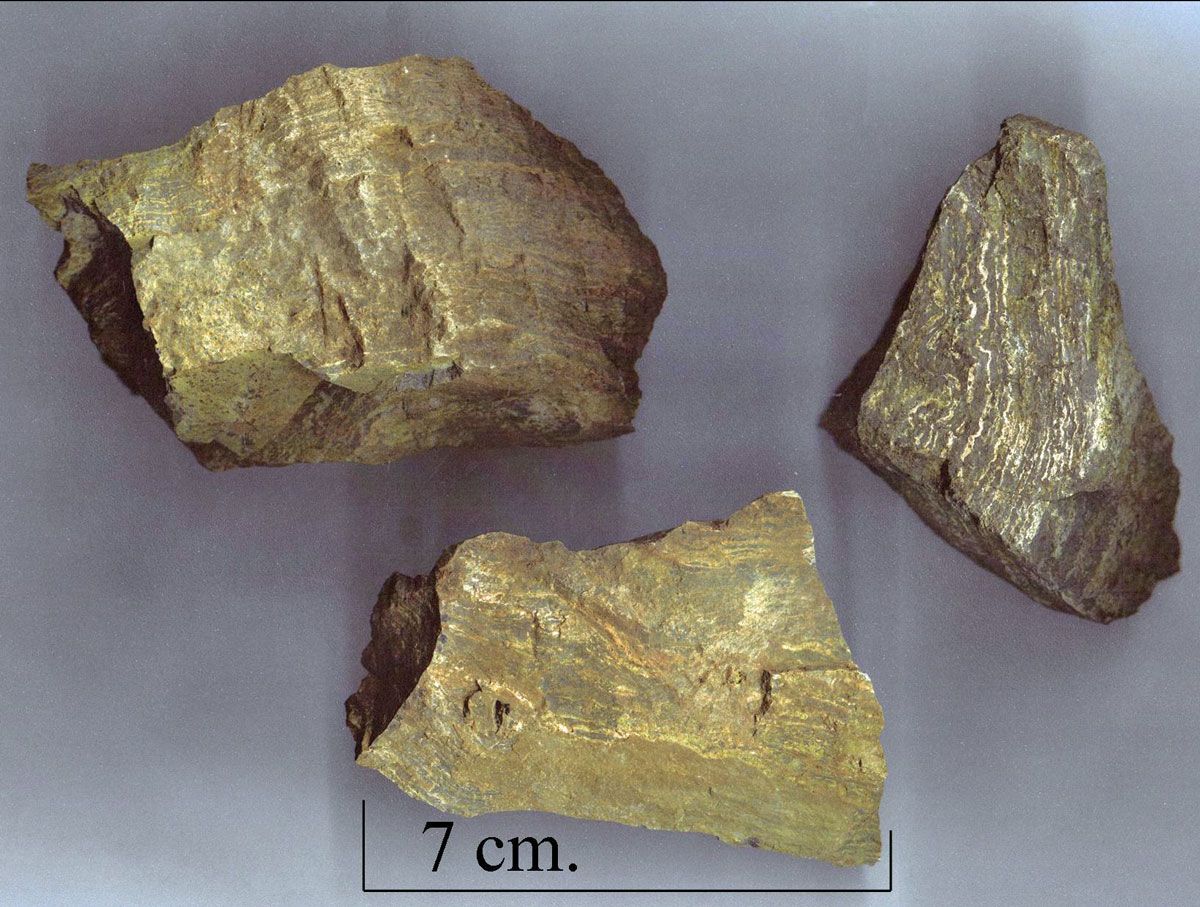
Rhyolite. Ercall quarry, Shropshire.
Rhyolite is a silica rich extrusive igneous rock. These specimens were collected from Ercall quarry in Shropshire on a field trip in July 2001. They were picked out of the rubble at the foot of the quarry face, which was plentiful at the time. One of the specimens can be described as flow banded. Unusually, this picture was taken using a photocopier before digital camera was the norm.
